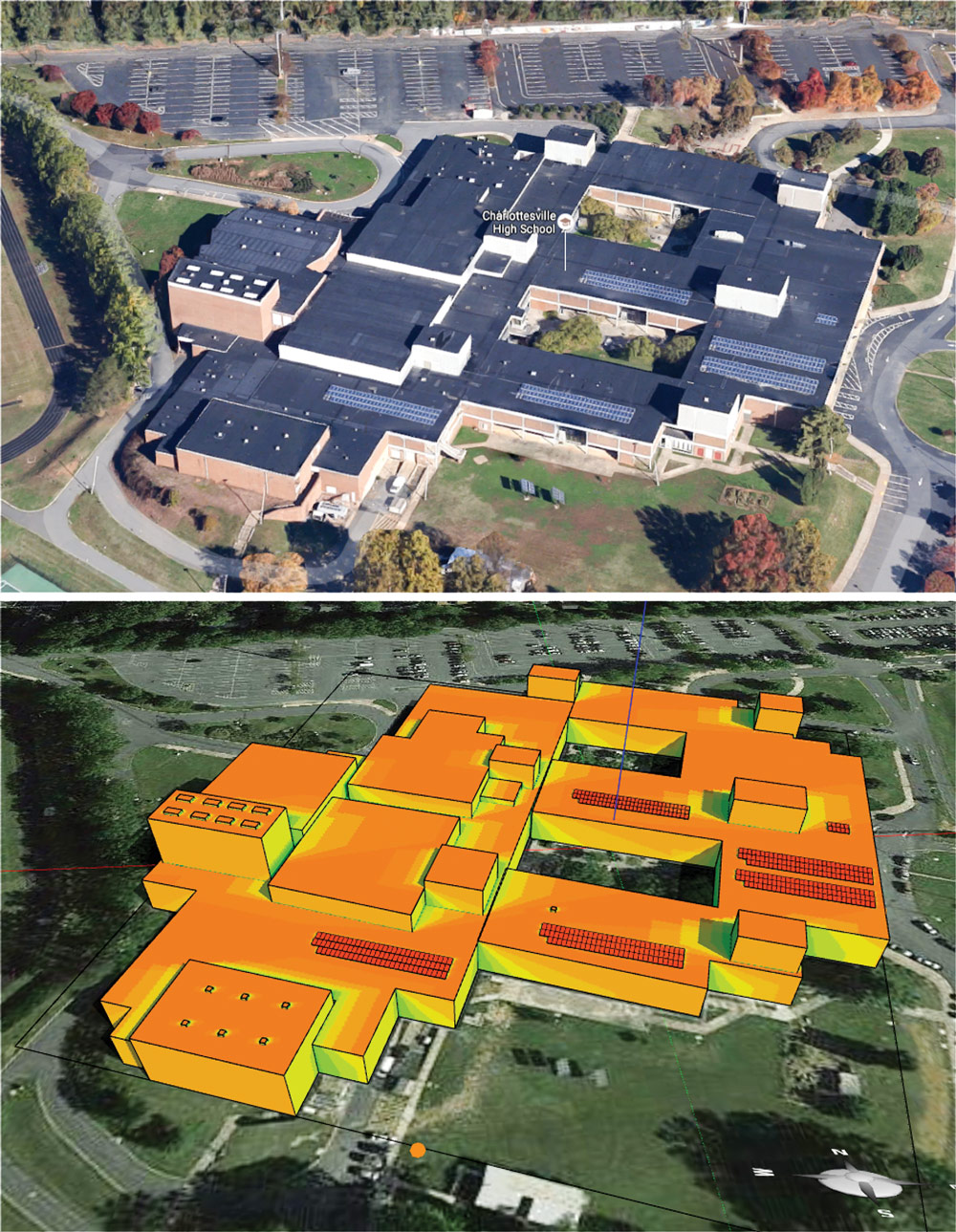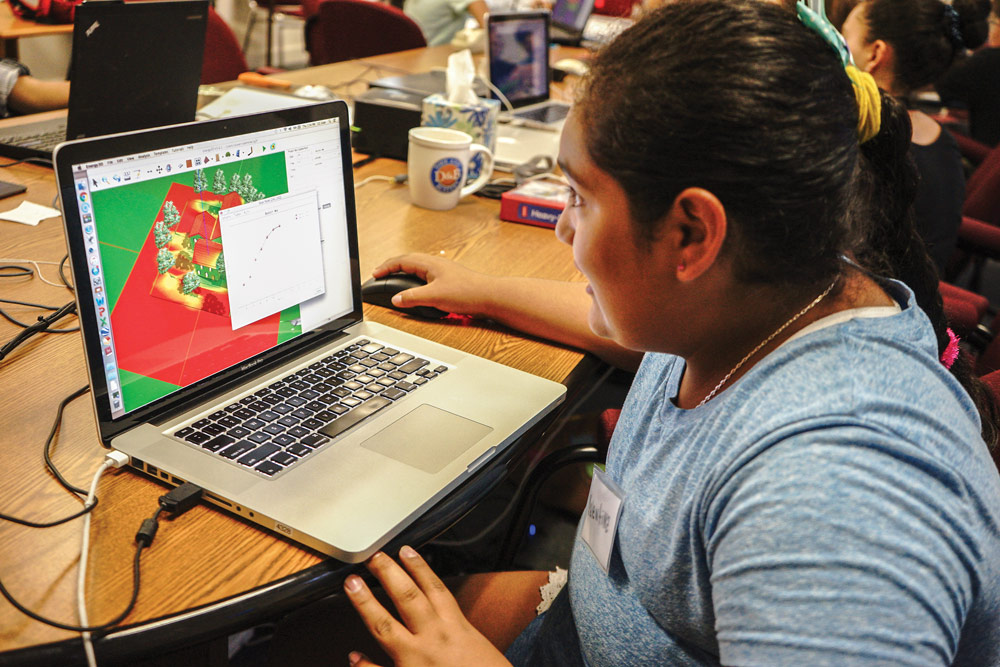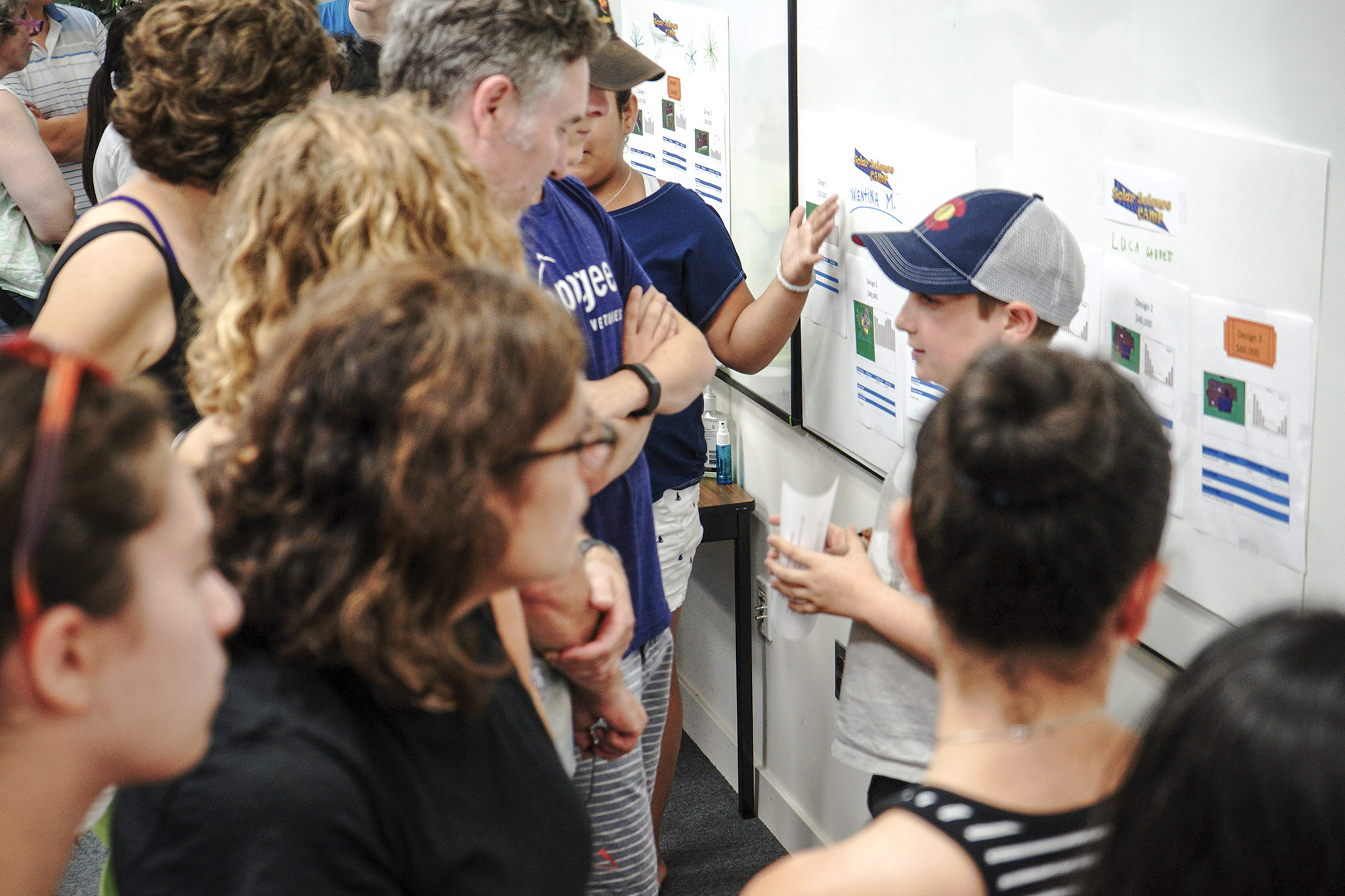Learning to Build a Sustainable World
On September 3, 2016, the United States ratified the Paris Agreement, which sets the goal to confine the global average temperature within 2°C above pre-industrial levels. Unlike many other treaties, the Paris Agreement took a bottom-up approach—exactly how the goal is to be accomplished is left for countries to pursue. As such, its fulfillment will require epic efforts from the grassroots in each country. As Bill Gates said to The Atlantic, “We need an energy miracle.”

The Concord Consortium has responded to the call with an education-industry partnership to engage millions of students in co-building a sustainable world with cleantech companies. This partnership is creating pathways from science learning in the classroom to problem solving in the real world with the goal of fostering science education and cleantech growth simultaneously. In collaboration with Borrego Solar, Boston Solar, and FLIR Systems, the project focuses on residential energy efficiency and solar energy exploitation. Such a project is compelling to schools because integrating real-world challenges in the curriculum can motivate students to learn.
Research and development concentrate on supporting students to learn science and engineering concepts and skills necessary for performing meaningful tasks to identify energy waste and solar potential in their homes, schools, and towns. While it is not appropriate to expect students to do a professional job, it is feasible to design a curriculum that guides them to gather scientific evidence that is sufficiently strong to influence decision makers, thereby generating valuable leads for cleantech companies. Industry contributions include co-developing the curriculum, ensuring the authenticity of tasks, incentivizing students to attain goals, and following up with practical solutions when leads emerge. The participation of cleantech companies is essential. After all, a problem is not solved until a solution is applied. By meeting the needs of all the stakeholders, this project can achieve a triple win: Students learn STEM knowledge and skills, families save money on energy costs, and companies create more cleantech jobs. This triple win is vital for the project to eventually find a way to fund itself.
“It felt as if I was getting some amazing experience that professionals do and I am only in high school.” ~ A student who used an infrared camera to inspect his home, 2016
Two innovative technologies
Our project would have little chance to succeed without tools that can support students in learning science and engineering and solving complicated real-world problems. Education is a priority as the project must first address this need.
Our work on infrared (IR) thermography and computer-aided design (CAD) over the past six years illuminates how engineering technologies can be transformed into educational technologies. These technologies used to be clumsy and expensive, but their latest generations have become much more friendly and affordable. The price of IR cameras (special cameras that show otherwise invisible heat transfer) has plummeted from thousands of dollars to about $200 in recent years, removing the last hurdle for them to become scientific inquiry tools in classrooms. As educational technology vendors such as Vernier and Pasco have started selling them to schools, more students will have access to their incredible power. In the meantime, CAD programs have evolved far beyond their original drafting versions of the 1990s and incorporated many physics engines that allow users to test ideas with simulations while conceiving designs. Sophisticated CAD software with this level of agility provides students with an engineering design environment for rapidly exploring clean energy solutions without any cost or risk. Free CAD tools of this type can propel the much needed K-12 engineering education to a large scale.
Two pathways from learning classroom subjects to solving real-world problems are made possible by these technologies.
Pathway I: From thermal science to energy efficiency
Many people are unaware of energy waste in their homes as heat transfer across the building envelope is often unnoticeable—until it is revealed by an IR camera. Unfortunately, an IR scan of a building works only seasonally, works best at night, and occasionally raises privacy concerns. These downsides limit its field applications and drive up business costs. But students are not subject to any of these limitations—they have no problem inspecting their own homes at night for free. The question is how we can teach them to get the job done right.
The ability to visualize heat makes IR cameras unrivaled for teaching thermal science—a subject area that most students spend weeks learning. A solid understanding of thermal science is also a prerequisite to thermographic diagnostics. This lays the groundwork for the following pathway: Students learn thermal science through hands-on experiments with an IR camera in schools and then, equipped with knowledge and skills and guided by an inspection protocol, study the energy efficiency of their own houses with the camera as homework (Figure 1).

Professionals may question the accuracy of student work. Indeed, when students are examining their homes independently, they can make mistakes. Part of our solution to this problem is a smartphone app called SmartIR, being developed in partnership with FLIR based on their FLIR ONE plug-in camera and the built-in sensors of a smartphone. SmartIR can walk students through an inspection process in real time and help them avoid common mistakes. For example, IR inspection requires the indoor-outdoor temperature difference to be at least 10°C. When viewing a building from the outside, nighttime is preferred as there will not be any false positives caused by solar heating. By using the temperature data from a weather service or the IR camera itself, the app can determine whether the temperature difference is large enough to do an inspection. By using the clock or ambient light sensor of the phone, it can tell whether students are conducting a task during the day or at night. And by using the location tracker, the accelerometer, and the digital compass, it can acquire the location and orientation of the camera. If an ideal condition is not detected, the app will suggest that students wait until nightfall eliminates the side effect of solar heating and lowers the outside temperature. SmartIR also allows students to easily collect IR images or videos, tagged with contextual data from sensors. Students can use a voice recorder to narrate an image or video. To accelerate the reporting process, the app automatically assembles the inputs from students, sensors, and cameras into reports that students can submit for grading.
Pathway II: From engineering design to solar power


There is no better time than now to inspire and prepare students for the solar challenge. Many teachers already cover solar power in their curriculum. But in most cases, students are not deeply involved in the solarization of their own homes, schools, and towns. It is true that students are not professionals and adults may not trust them when making serious investments in solar energy. But there is a safe way to let them try: computer simulation.
Unfortunately, CAD programs for solar simulation typically cost $1,000 per license and most hardly support student learning.
To address these problems, we have developed a free alternative—Energy3D. With a simulation accuracy that rivals its pricey counterparts, this versatile tool can be used to design rooftop solar systems for residential and commercial buildings, ground-mounted photovoltaic solar farms with or without trackers, and concentrated solar power stations. Importantly, Energy3D is full of visual effects and graphing tools essential to teaching and learning.
We have developed three engineering projects based on Energy3D for students:
- Solarize Your School. Students design solar solutions that turn the roof and parking area of their school into small power plants. If their school has already installed solar panels, students can model the existing design as a baseline and investigate whether it can be revised to produce more electricity (Figure 2).
- Solarize Your Home. Students design solar panel arrays for the roofs of their own houses. They sketch Energy3D models of their houses, add solar panels, and use simulations to decide whether it is viable for their families to “go solar” (Figure 3).
- Solarize Your Town. Students explore all sorts of solar solutions for their towns. This open-ended project aims to unleash creativity. Students have flexibility in choosing solar technologies, sites, and scales.
In all three projects, students must perform feasibility analyses to evaluate the costs and benefits of their designs. Borrego Solar and Boston Solar will provide their expertise in commercial and residential solar systems, respectively, to support the implementations of these student projects.
From students to change makers
Our pilot studies have shown promising outcomes. In a study of 18 students in the energy efficiency pathway, all 12 respondents to the exit survey indicated that the heat transfer concepts they learned in the classroom helped them understand how energy flows in their homes.
To ignite changes beyond the school walls, we will create a virtual network based on Google Maps for students to inform the community about their work. Through this network, students will be able to share their thermal images and solar designs—along with their scientific analyses, feasibility studies, and presentation slides—with friends, parents, schools, governments, and companies. An extension of SmartIR will empower students to create the Infrared Street View, an IR version of the Google Street View that renders a virtual thermal reality of neighborhoods. Together, students can collect and produce useful information about the energy efficiency and solar potential of their areas. Cities and towns can use this information to assess the current state of their energy issues. Companies can use it to identify potential customers. And future students will be able to compare their results with past results to see if any progress has been made.
Ultimately, as envisioned by the National Science Foundation, which invests in the future of our nation, millions of “change makers” cultivated by our education systems will jointly catalyze an energy miracle.
“Learners can be Change Makers, identifying and working to solve problems that matter deeply to them, while simultaneously advancing their own understanding and expertise. Research shows that engaging in real world problem solving enhances learning, understanding, and persistence in STEM.” ~ National Science Foundation, 2016
Charles Xie (qxie@concord.org) is a senior scientist at the Concord Consortium.
This material is based upon work supported by the National Science Foundation under grant DRL-1503196. Any opinions, findings, and conclusions or recommendations expressed in this material are those of the author(s) and do not necessarily reflect the views of the National Science Foundation.

